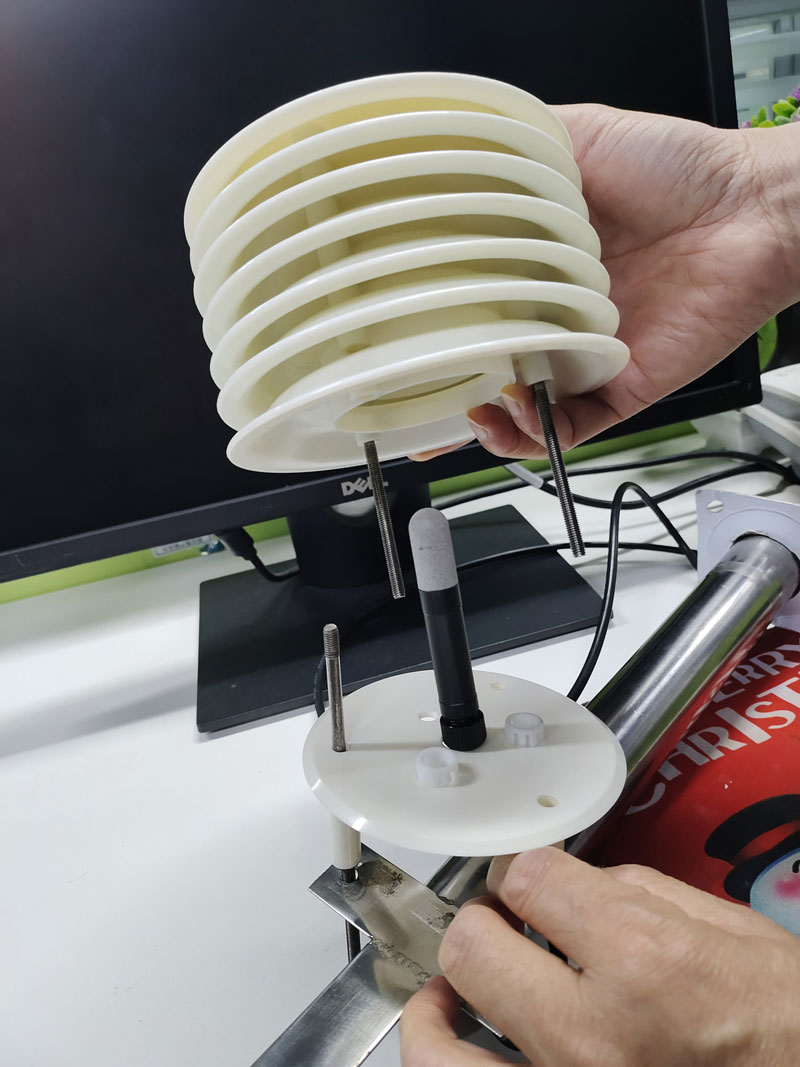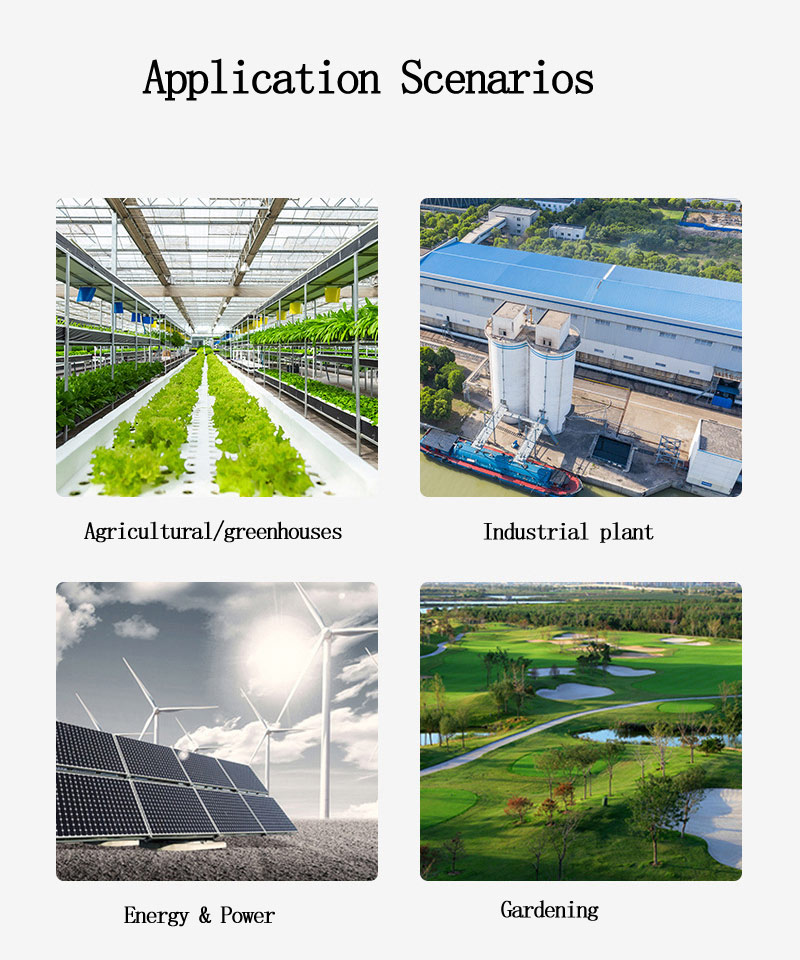

— Blogs —
—Products—
 Consumer hotline +8618073152920
Consumer hotline +8618073152920 WhatsApp:+8615367865107
Address:Room 102, District D, Houhu Industrial Park, Yuelu District, Changsha City, Hunan Province, China
Product knowledge
Time:2025-10-14 14:39:41 Popularity:416

Ambient temperature sensors are the most basic and core components in all meteorological monitoring systems. They are responsible for measuring the temperature of the air surrounding the sensor and converting thermal energy changes into digital signals that can be read by electronic systems. In agriculture, temperature is more than just a number—it is a key parameter that drives crop growth, development, dormancy, and even death. Any imprecise temperature data can lead to errors in subsequent agricultural decisions.
The design of ambient temperature sensors leverages the physical or electrical properties of materials that change with temperature. The mainstream sensor types include:
Principle: Utilizes the characteristic of metals (most commonly platinum Pt100/Pt1000) where resistance increases linearly with rising temperature. Measurement requires a Wheatstone bridge circuit to convert resistance changes into readable voltage signals.
Features: RTDs offer extremely high long-term stability, linearity, and accuracy. They are the preferred choice for industrial-grade and research-grade meteorological stations, especially the Pt1000 model, which has lower power consumption and is more suitable for battery-powered field stations.
Principle: Utilizes the non-linear change in resistance of semiconductor materials like ceramics or polymers with temperature. The most common type is the Negative Temperature Coefficient (NTC) thermistor, where resistance decreases as temperature rises.
Features: Lower cost and fast response time, but poorer linearity. Its non-linear characteristics require complex data post-processing using the Steinhart-Hart equation or lookup tables for temperature conversion, increasing system complexity.
Principle: Utilizes the temperature-dependent change in the base-emitter voltage of semiconductor transistors.
Features: Compact size, with built-in digital calibration and signal processing circuits that can directly output digital signals (e.g., I²C), making them easy to integrate and suitable for mass production. They are ideal for Internet of Things (IoT) applications.
In precision agriculture, the role of ambient temperature sensors has been elevated to the decision-making level:
Frost Warning and Prevention: Sensors continuously monitor air temperature. When temperatures drop to a critical point (e.g., 2°C), the system issues an early alert. Professional warning systems also combine humidity data to determine if the dew point temperature may be reached, guiding farmers to promptly activate irrigation or heating systems to effectively protect crops.
Accumulated Temperature Calculation and Growth Stage Prediction: Agronomy relies on Growing Degree Days (GDD) to assess crop growth progress. Accurate temperature data is the foundation for calculating GDD. It enables precise predictions of when crops will flower or mature, guiding harvesting and market supply.
Greenhouse Environment Control: In greenhouses, ambient temperature sensors serve as the core input for closed-loop control systems. Sensors should be deployed at the crop canopy height. They provide real-time data to ventilation systems, shading systems, and heating systems, ensuring the internal greenhouse temperature remains within the optimal growth range for the crops.
A high-tech flower greenhouse uses NiuBoL's high-precision RTD (Pt100/Pt1000) ambient temperature sensors as the primary input for its automation system.
Precise Control: The sensors provide industrial-grade temperature data with accuracy better than ±0.2°C.
System Integration: The temperature control system adjusts the opening of top vents and side wet curtains every 3 minutes based on this data, using PID control algorithms.
Results: Under optimal conditions, it achieves year-round control of internal greenhouse temperature fluctuations within a ±0.3°C limit, greatly improving the quality and uniformity of temperature-sensitive flowers.
The greatest challenge in ambient temperature measurement is errors caused by solar radiation and thermal inertia. To eliminate these errors:
Radiation Shields: Sensors must be installed in multi-layer ventilated white radiation shields to block direct sunlight. At the same time, the multi-layer ventilation structure ensures that the sensor measures the temperature of the flowing ambient air, not the sensor's own temperature heated by sunlight.
Temperature Compensation: High-quality sensors incorporate built-in temperature compensation algorithms to eliminate measurement errors on the sensor elements themselves due to extreme ambient temperatures.
NiuBoL's ambient temperature sensors use industrial-grade RTD elements (Pt100/Pt1000), ensuring excellent accuracy (better than ±0.2°C) and long-term stability. All sensors come standard with high-reflectivity ventilated radiation shields that comply with WMO standards, ensuring your temperature data reflects the true environmental temperature, not false readings interfered by sunlight.
Call to Action: Accurate temperature data is the starting point for efficient agriculture. Choose our sensors to make your temperature measurements trustworthy. Contact our experts immediately to learn about the best deployment strategies for temperature sensors.

A: Professional ambient temperature sensors must be installed in radiation shields. The shields consist of multi-layer high-reflectivity white plastic discs, which can effectively reflect solar radiation (preventing the sensor itself from being heated), while the multi-layer structure and ventilation design allow air to flow naturally, ensuring the sensor measures the temperature of the passing ambient air.
A: For critical applications like meteorological stations and greenhouse control that require long-term stability and high accuracy, we strongly recommend using RTDs. For non-core applications that need fast response and can tolerate lower accuracy (such as shallow soil temperature monitoring), thermistors can be considered.
A: High-quality RTD sensors have very low long-term drift and typically only require standard calibration in a laboratory once a year or every two years. Daily maintenance mainly focuses on keeping the radiation shield clean to ensure smooth ventilation and prevent dust or dirt buildup from affecting measurement accuracy.
Prev:Global Market Trends for Agriculture IoT Sensors in 2025-2028
Next:What Is an Agrometeorological Station? A Beginner’s Guide
Related recommendations
Sensors & Weather Stations Catalog
Agriculture Sensors and Weather Stations Catalog-NiuBoL.pdf
Weather Stations Catalog-NiuBoL.pdf
Related products
 Combined air temperature and relative humidity sensor
Combined air temperature and relative humidity sensor Soil Moisture Temperature sensor for irrigation
Soil Moisture Temperature sensor for irrigation Soil pH sensor RS485 soil Testing instrument soil ph meter for agriculture
Soil pH sensor RS485 soil Testing instrument soil ph meter for agriculture Wind Speed sensor Output Modbus/RS485/Analog/0-5V/4-20mA
Wind Speed sensor Output Modbus/RS485/Analog/0-5V/4-20mA Tipping bucket rain gauge for weather monitoring auto rainfall sensor RS485/Outdoor/stainless steel
Tipping bucket rain gauge for weather monitoring auto rainfall sensor RS485/Outdoor/stainless steel Pyranometer Solar Radiation Sensor 4-20mA/RS485
Pyranometer Solar Radiation Sensor 4-20mA/RS485
Screenshot, WhatsApp to identify the QR code
WhatsApp number:+8615367865107
(Click on WhatsApp to copy and add friends)
